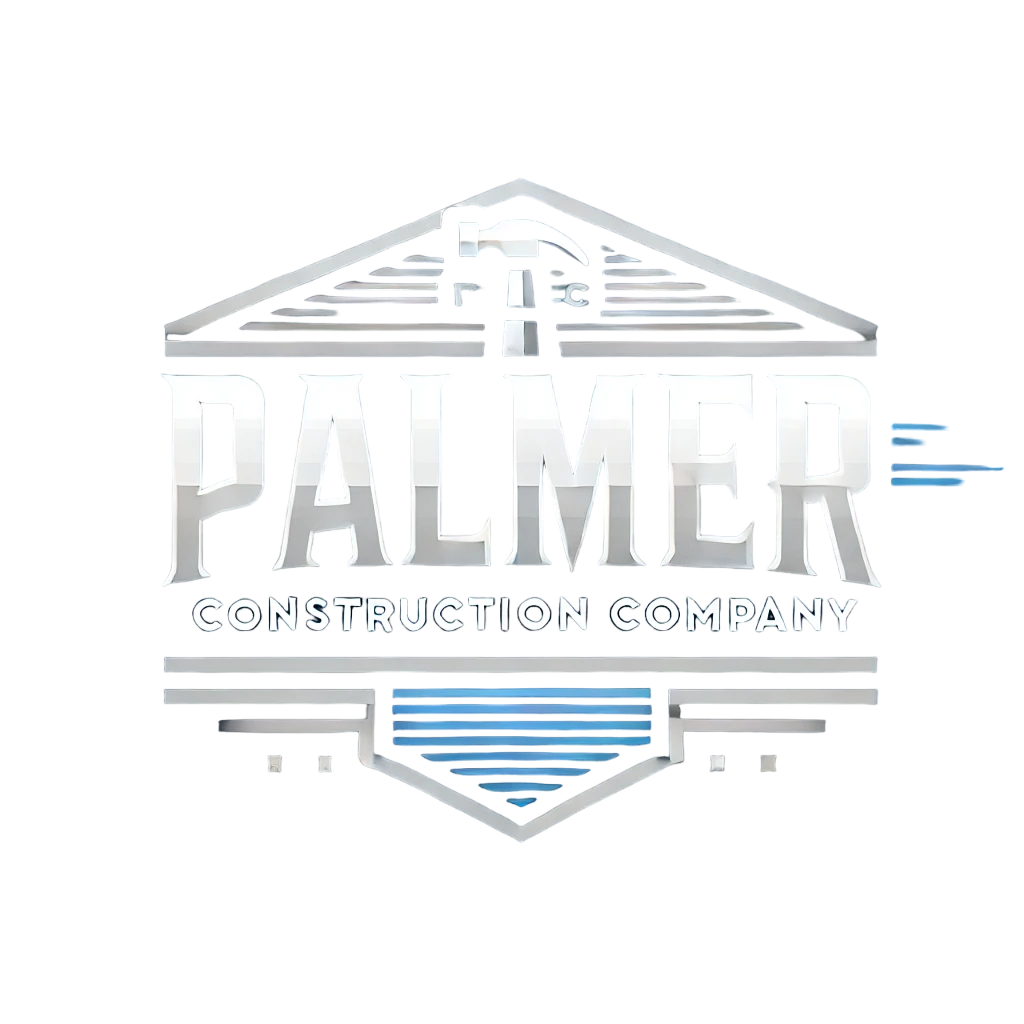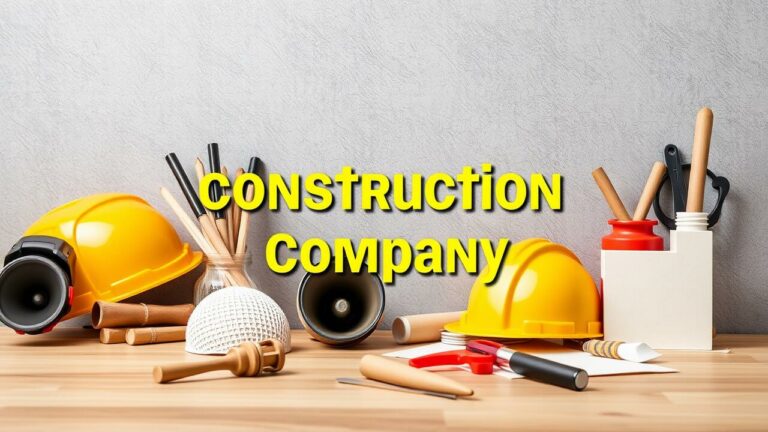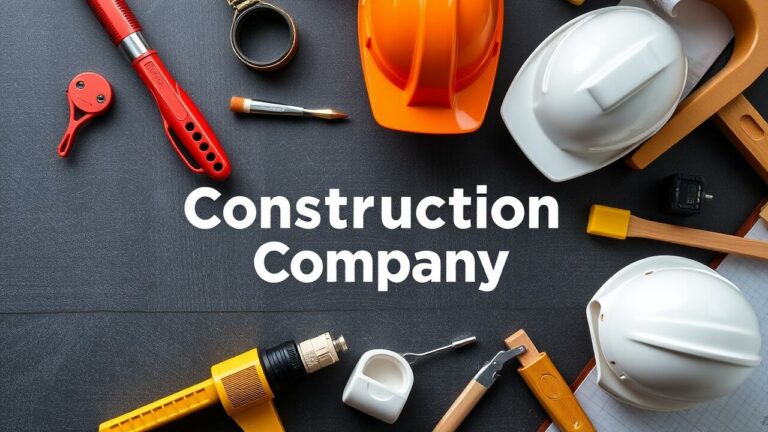Cost Factors in General Contracting Services
The costs tied to general contracting services can swing wildly, dictated by a myriad of factors. Labor expenses—often the heavyweight in any construction budget—are swayed by market wage rates and the intricacies of the project at hand. Then there’s material costs, dancing to the unpredictable beat of market conditions and your choice between top-tier materials or more standard options. Let’s not forget location; urban settings typically command heftier prices due to a fierce competition for skilled labor and logistical hurdles.
But wait, there’s more! The timeline of your project also weaves its influence into this financial tapestry. When deadlines tighten like a vise grip, you might find yourself shelling out extra cash for additional manpower or speedy shipping on materials—a recipe for ballooning expenses. And just when you think you’ve accounted for everything, nature throws a curveball with weather delays or pesky regulatory issues that can derail even the best-laid plans, adding unexpected dollars to your initial budgetary outline. Thus, engaging in meticulous planning and having in-depth conversations with your general contractor is crucial—it sheds light on potential pitfalls and arms you with strategies to tackle whatever surprises may pop up during the construction journey ahead.
Estimating Budgets and Managing Expenses
Ah, the art of budget estimation—an indispensable cornerstone in the labyrinthine world of project management! One must delve deep into the myriad factors that sway costs: from materials and labor to those pesky permits. It’s a dance of precision, ensuring forecasts are not just numbers on a spreadsheet but lifelines for success. Contractors often wield intricate cost breakdowns like masterful artisans; these documents lay bare both fixed and variable expenses, crafting realistic expectations for clients who may be blissfully unaware of what lurks beneath.
And then there’s the ever-elusive contingency fund—a financial safety net woven into the fabric of any budget. This allows room for flexibility amid unforeseen hiccups during construction, an essential buffer against chaos lurking around every corner.
But wait! Effective expense management isn’t merely important; it’s absolutely vital throughout this tumultuous journey known as construction. Regularly peering into expenditure trends keeps projects tethered to their budgets while allowing swift corrections when those unexpected twists arise. Enter technology—the unsung hero here—with software and accounting tools that can transform tedious tracking into seamless oversight, granting real-time glimpses into fiscal health.
Yet amidst all this number crunching and meticulous planning lies another key element: communication! Keeping those channels wide open between client and contractor transforms potential budgetary disasters into manageable discussions before they spiral out of control. In this unpredictable realm, collaboration becomes not just beneficial but essential—ensuring everyone stays aligned in pursuit of shared goals amid uncertainty’s ever-present shadow.
Benefits of Hiring a General Contractor
Bringing a general contractor on board can dramatically elevate the efficiency of any construction endeavor. With a wealth of industry insights and hands-on experience, these professionals wield the know-how to deftly maneuver through the labyrinth of building codes and regulations that often trip up less seasoned players. They serve as the linchpin in this intricate dance, orchestrating subcontractors and ensuring that every facet of the project resonates with the overarching vision. Such an approach not only sidesteps potentially costly blunders but also streamlines communication among all stakeholders involved.
Moreover, enlisting a general contractor can translate into significant time savings—a precious commodity in any construction venture. These experts excel at crafting meticulous project timelines and possess an uncanny ability to anticipate delays or hurdles before they spiral out of control. By nipping potential problems in the bud, general contractors help keep everything running smoothly and within budgetary confines. This kind of foresight allows property owners to zero in on their primary responsibilities without getting bogged down by the overwhelming sea of choices that come with managing construction projects.
Streamlining the Construction Process
An intricately woven construction process can dramatically amplify project efficiency, like a finely tuned orchestra hitting all the right notes. General contractors emerge as pivotal conductors in this symphony, deftly orchestrating myriad elements to ensure that every stakeholder is harmonized and on tempo. By meticulously managing timelines and supervising subcontractors, they weave a fabric of seamless communication among all involved parties—diminishing the specter of miscommunications and delays that lurk around corners.
Moreover, their acumen in logistics and resource allocation acts as a compass, guiding projects through the tumultuous seas of budgets while steering them toward timely completion. But wait! The plot thickens with the infusion of technology into this already dynamic mix. Embracing cutting-edge software tools for project management transforms chaos into clarity: schedules, budgets, progress—all tracked in real-time with an illuminating transparency that fosters collaboration among team members and clients alike.
Suddenly everyone is privy to the same treasure trove of information! With these innovative solutions at their fingertips, general contractors become adept navigators—anticipating challenges before they crest on the horizon and deploying proactive measures with finesse. The result? A construction experience that’s not just smoother but downright exhilarating—a journey where obstacles are mere stepping stones rather than roadblocks.
Common Challenges Faced by General Contractors
The construction industry is a labyrinth, teeming with challenges that general contractors must deftly maneuver through on a daily basis. One of the most persistent hurdles? The specter of unexpected delays—those unwelcome interruptions that can spring forth from a multitude of sources: unpredictable weather patterns, supply chain hiccups, or even labor shortages. These delays have a knack for stretching project timelines and sowing seeds of dissatisfaction among clients who expect timely completion. It’s imperative to wield effective planning and contingency strategies like tools in an arsenal, ready to counteract these setbacks and keep the momentum running smoothly.
But wait! There’s more—a weighty challenge looms over cost control throughout this intricate construction dance. Project budgets are notoriously fickle, easily swayed by unforeseen expenses lurking in the shadows; think material price swings or sudden shifts in project scope. General contractors find themselves navigating this financial minefield, employing meticulous budget management techniques as their guiding compass amidst uncertainty. And let’s not overlook the lifeline of open communication with clients—crucial for aligning expectations and fostering mutual understanding as they traverse the winding path of each project lifecycle together.
Navigating Delays and Unexpected Costs
Construction projects, those intricate webs of timelines and budgets, often stumble into a labyrinth of unforeseen delays and unexpected expenses. Just when you think everything is on track, bam! Inclement weather swoops in like an uninvited guest, supply chain hiccups rear their ugly heads, or labor shortages cast shadows over progress. General contractors find themselves in a dance with uncertainty—agility becomes the name of the game as they juggle these challenges while keeping clients in the loop.
Ah, effective project management practices! They’re not just buzzwords; meticulous scheduling and crafty contingency planning are essential lifelines to stave off disruptions and keep that project momentum humming along.
But wait—unexpected costs lurk around every corner! A design change here or a hidden structural surprise there during renovations can send budgets spiraling. Allocating funds for contingencies isn’t merely wise; it’s practically imperative for navigating this unpredictable terrain proactively. And let’s not overlook transparency—it’s gold when it comes to maintaining trust between contractors and clients amidst financial surprises that inevitably emerge. Regular updates? Yes! Open discussions about potential costs? Absolutely! It’s all part of weaving that tapestry of collaboration where both parties stay aligned as they tackle challenges together head-on.
The Future of General Contracting
The future of general contracting is poised on the brink of a seismic shift, driven by breathtaking technological advancements that are nothing short of revolutionary. Picture this: Building Information Modeling (BIM) and cutting-edge project management software stepping onto the scene like game changers, completely redefining the playbook for contractors everywhere. Gone are the days when projects unfolded in a haze of miscommunication; these innovations foster seamless collaboration among all players involved, turbocharging efficiency and slashing error rates to smithereens. As these technologies weave themselves into the very fabric of daily operations, contractors may find themselves basking in newfound productivity while watching project timelines shrink before their eyes.
But wait—there’s more! Sustainability isn’t just a passing trend; it’s becoming an imperative guiding light for general contractors as they forge ahead. With consumers clamoring for eco-friendly materials and energy-efficient designs louder than ever, there’s no ignoring this call to action. Stricter regulations regarding environmental impacts loom on the horizon, compelling contractors to pivot towards green building practices with urgency. This transformation not only meets market demands but also positions them strategically to reap long-term cost savings through sustainable construction methods—what could be better? The landscape is shifting dramatically under our feet; buckle up!
Trends and Innovations in the Construction Industry
The construction industry is undergoing a remarkable metamorphosis, and it’s all fueled by the relentless march of technology. Picture this: building information modeling (BIM) weaving together a tapestry of collaboration among diverse stakeholders, each thread enhancing communication like never before! Then there’s virtual reality (VR) and augmented reality (AR), those dazzling tools that take project visualization to dizzying heights while captivating clients in ways previously deemed unimaginable. These innovations don’t just smooth out the design phase; they orchestrate real-time tweaks that catapult efficiency upward and slash errors on-site—how’s that for a game changer?
But wait, there’s more! Sustainability has burst onto the scene as a vital heartbeat of contemporary construction practices. A pronounced focus on eco-friendly materials and energy-efficient designs is turning traditional project planning upside down. Enter innovations like prefabrication and modular construction—these marvels not only minimize waste but also accelerate turnaround times with breathtaking speed. And let’s not overlook the rise of green certifications, establishing new benchmarks for environmental stewardship within the industry. These trends are not merely whispers of change; they’re bold declarations showcasing an unwavering commitment to refining operational processes while championing a brighter, more sustainable future!
| Innovation | Description | Benefits |
|---|---|---|
| Building Information Modeling (BIM) | A digital representation of physical and functional characteristics of a facility. | Enhances collaboration, improves communication, and reduces errors. |
| Virtual Reality (VR) / Augmented Reality (AR) | Technology that enables immersive visualizations and client engagement. | Improves project visualization and allows for real-time adjustments. |
| Prefabrication | Construction method where components are made off-site and assembled on-site. | Reduces waste, accelerates project timelines, and enhances quality control. |
| Green Certifications | Standards that recognize sustainable building practices and resources. | Encourages eco-friendly practices and promotes environmental responsibility. |
How to Communicate Effectively with Your Contractor
Kicking off a project with crystal-clear expectations is absolutely vital for nurturing a fruitful relationship with your contractor. This means diving deep into discussions about the project’s goals, timelines, and those pesky specifics that could shift the scope of work in unexpected ways. Handing over comprehensive documentation—think detailed drawings and specifications—acts like a roadmap, ensuring both parties are cruising along the same path. And don’t forget regular updates and check-ins! These little touchpoints can transform communication from mere formality to dynamic collaboration, paving the way for necessary adjustments while keeping misunderstandings at bay.
But wait—there’s more! The heart of effective communication beats in an environment rich with trust and transparency. Urging your contractor to lay bare any concerns or hurdles they stumble upon opens up avenues for proactive problem-solving before issues balloon into headaches. Keeping that dialogue flowing throughout the project is not just beneficial; it’s essential! Swiftly tackling challenges as they pop up prevents them from spiraling out of control and helps ensure everything stays on course toward successful completion.
Establishing Clear Expectations and Timelines
Effective communication—oh, it’s the lifeblood pulsating through the veins of client-contractor relationships! From the very beginning, setting clear expectations is like laying down a sturdy foundation; it scaffolds against those pesky misunderstandings that might rear their heads during construction chaos. When you dive into the nitty-gritty details—design whims, material choices, and timelines—you’re not just talking shop; you’re crafting a blueprint for collaboration that flows smoothly.
But wait! It doesn’t stop there. Regular check-ins? Absolutely essential! They create an ongoing dialogue, ensuring both parties remain in sync as they traverse the myriad phases of this intricate dance called a project.
Now let’s talk timelines. Oh yes, defining them does more than impose structure—it transforms ambiguity into measurable goals! Agreeing on key milestones and deadlines acts like signposts guiding workflow and resource allocation. And here’s the kicker: when contractors grasp how crucial these timelines are to clients? Suddenly, prioritizing tasks becomes second nature—they’re all in to keep things humming along!
And what about those potential delays lurking in the shadows? Open discussions about them serve as a safety net for clients; they prepare everyone for possible schedule shifts while nurturing that oh-so-important sense of collaboration and trust. So let’s communicate effectively and build bridges instead of barriers!
- Establish a detailed project scope to ensure all parties understand their responsibilities.
- Use project management tools to keep track of progress and timelines.
- Schedule regular meetings to discuss updates, address concerns, and adjust plans as needed.
- Document all agreements regarding timelines and expectations for future reference.
- Encourage feedback to foster a more collaborative environment.
- Be transparent about potential challenges and delays to maintain trust.
- Celebrate milestones and completed phases to boost morale and motivation among the team.
Conclusion
The role of general contractors is in a constant state of metamorphosis, shifting with the ever-changing terrain of construction and the kaleidoscope of client expectations. Their expertise serves as a linchpin—amplifying project efficiency while ensuring that safety standards are not just met but embraced, regulatory compliance isn’t merely checked off a list, and quality control becomes second nature. As the industry pivots toward innovative technologies and fresh methodologies, the adaptability and skill set of general contractors morph into essential elements for navigating successful project delivery.
Opting to partner with a general contractor bestows upon clients a distinct edge: streamlined communication intertwined with seamless project coordination. In nurturing this collaborative atmosphere, contractors wield the ability to deftly manage resources and timelines while tackling challenges that may spring forth unexpectedly. This symbiotic partnership doesn’t just yield satisfactory results; it sows the seeds for enduring relationships between clients and contractors—ultimately enhancing every facet of the construction journey.






